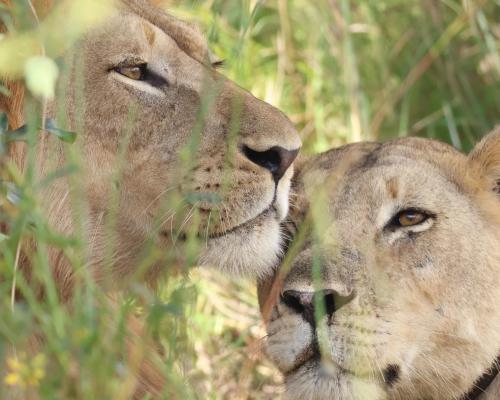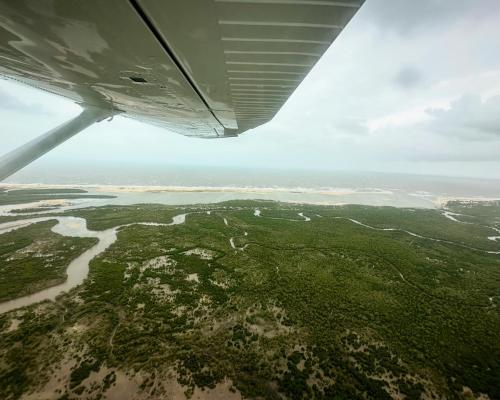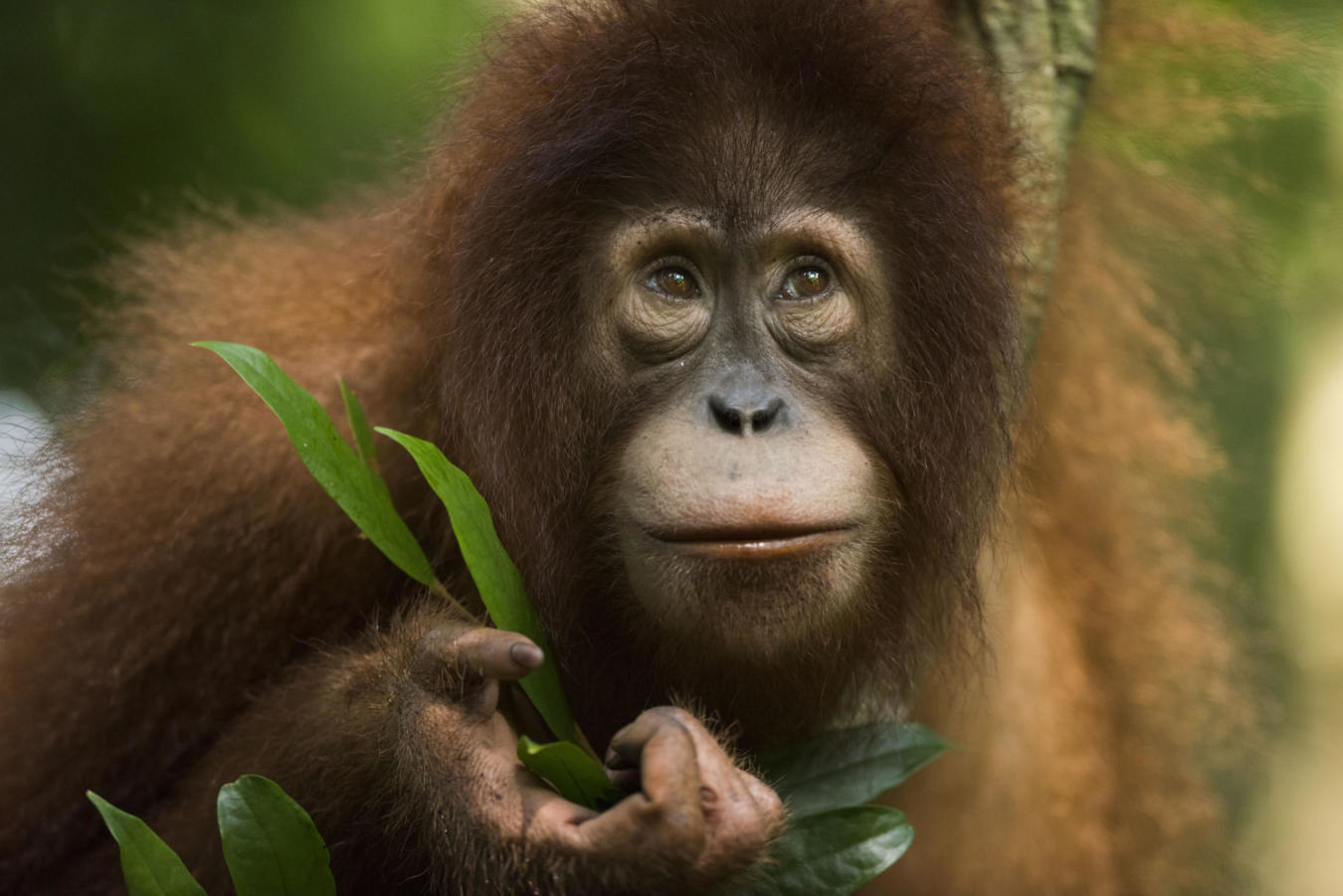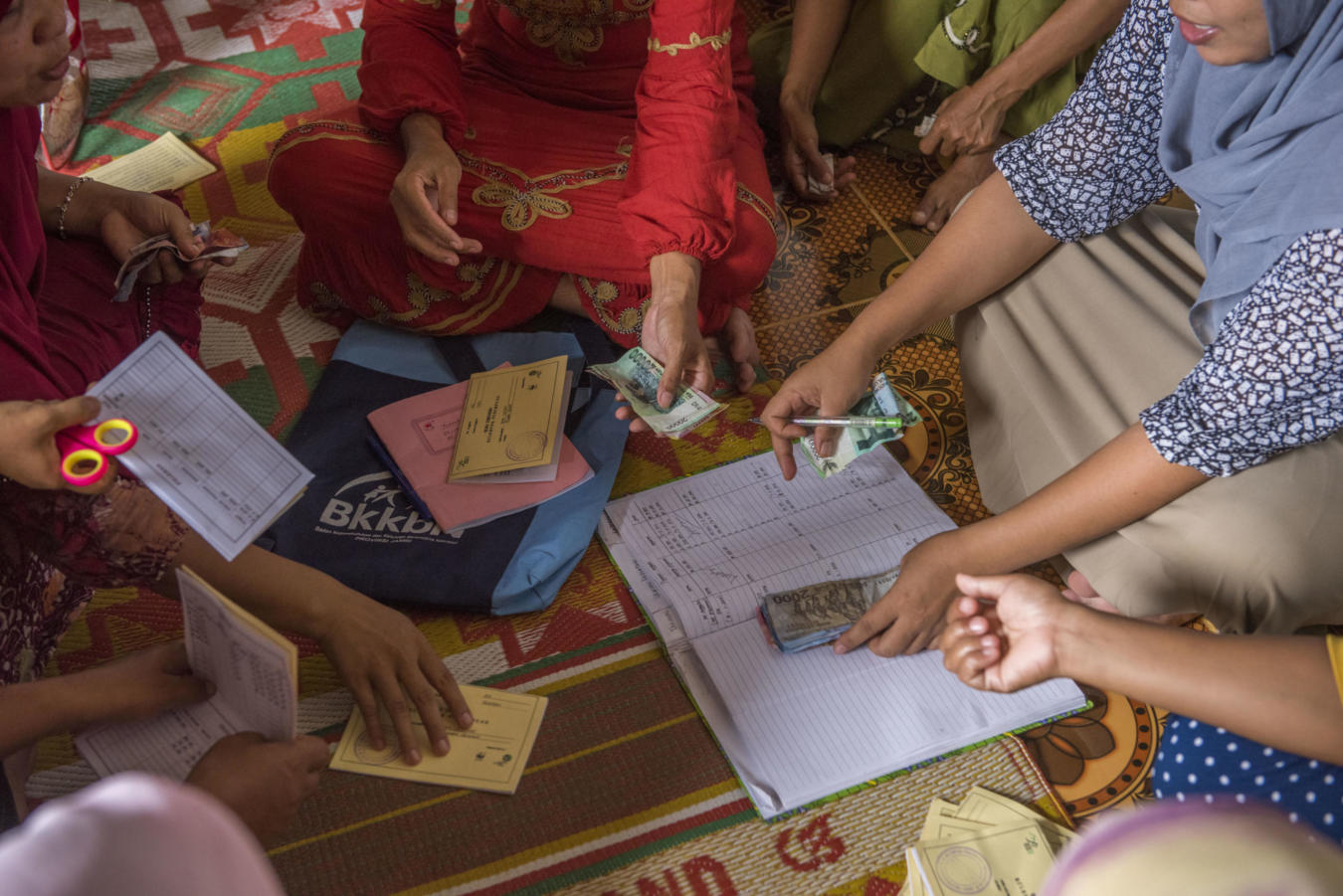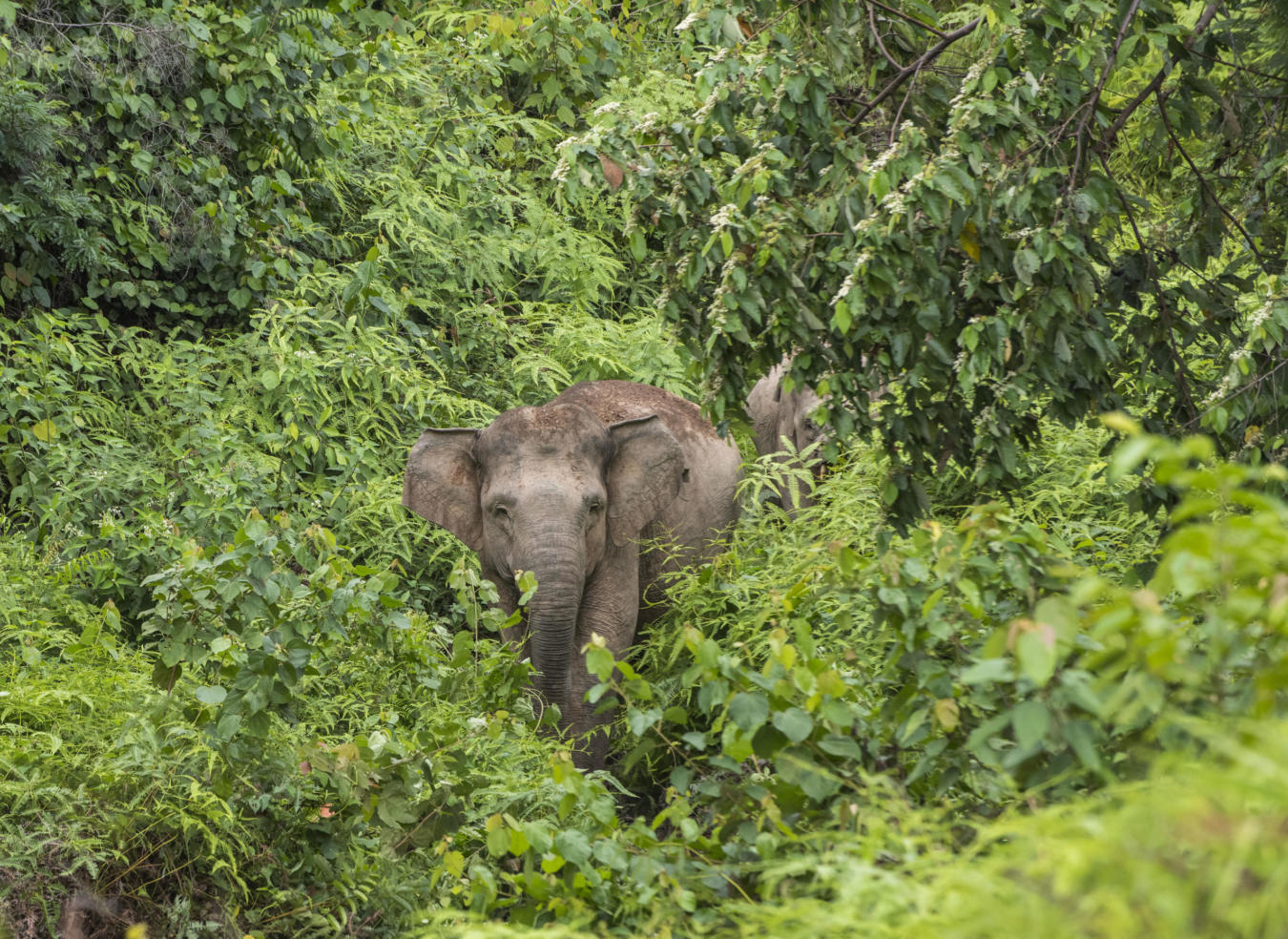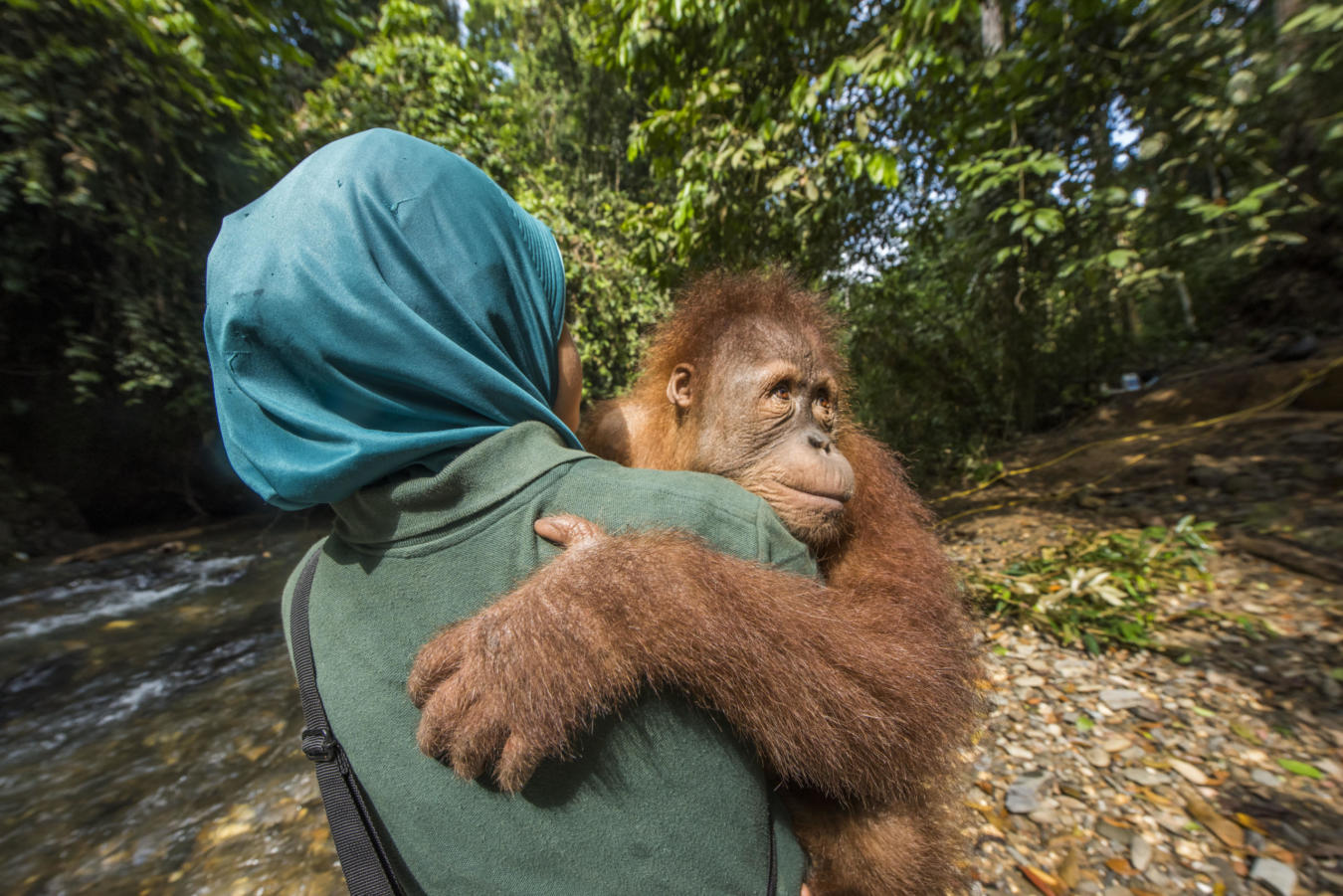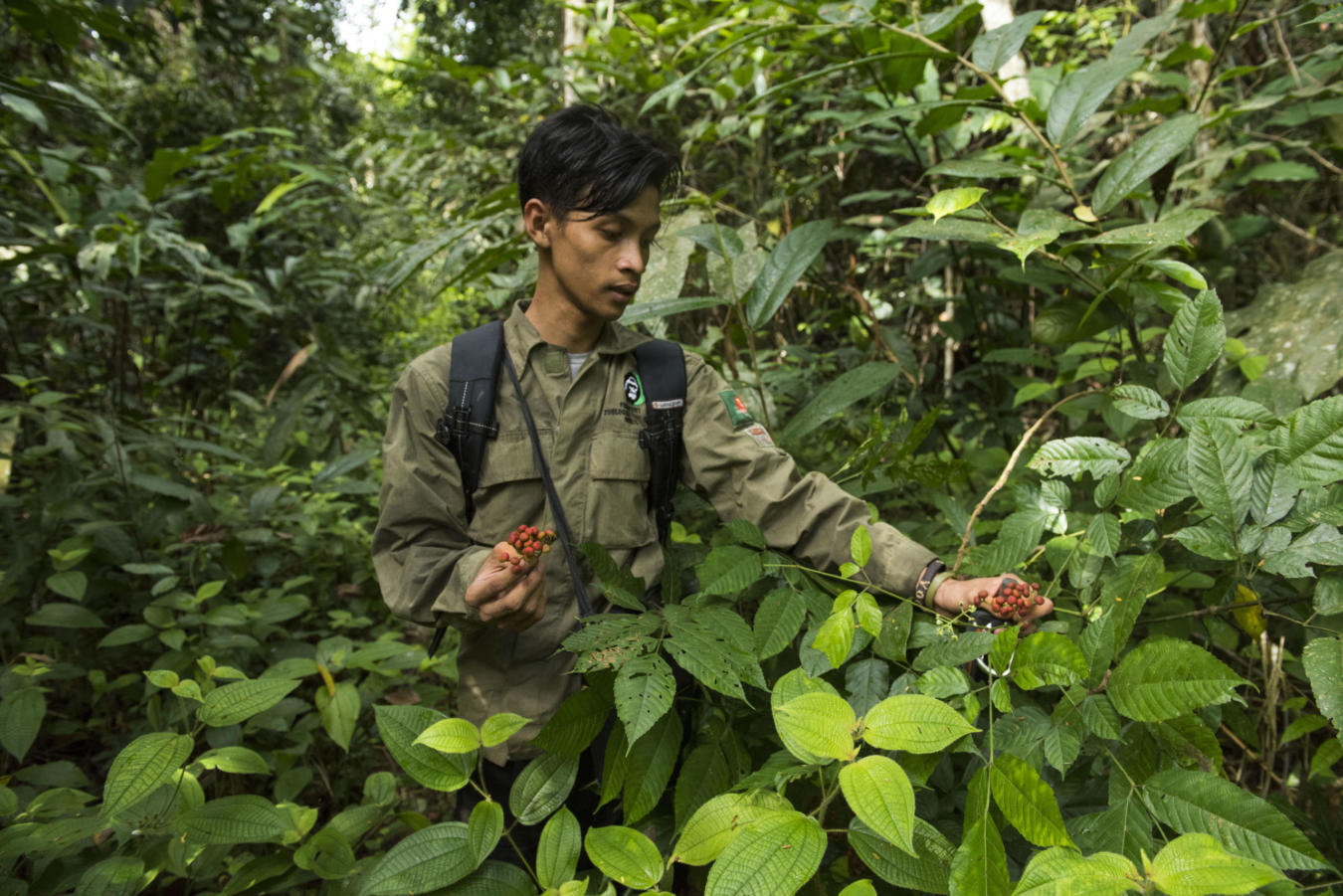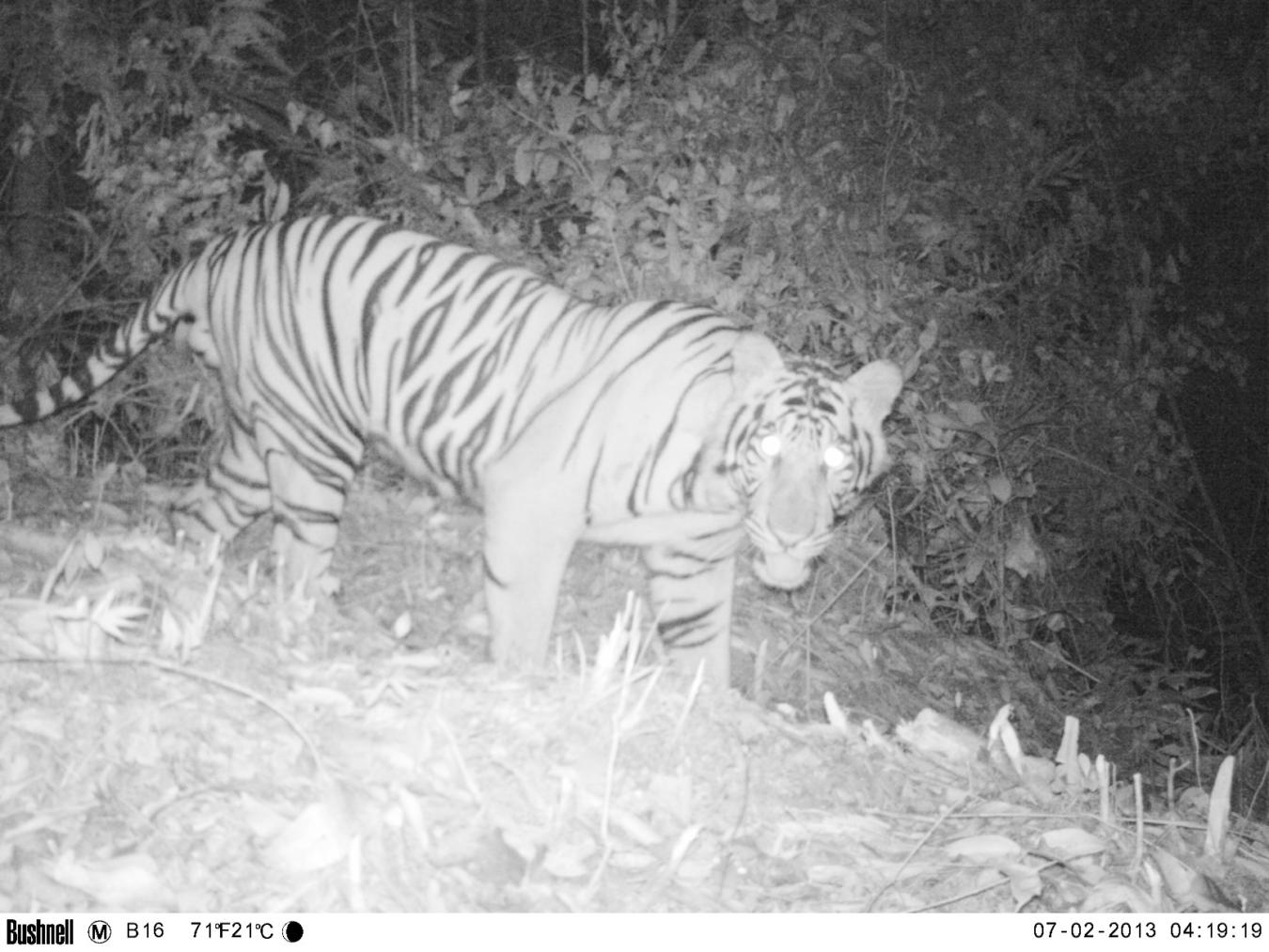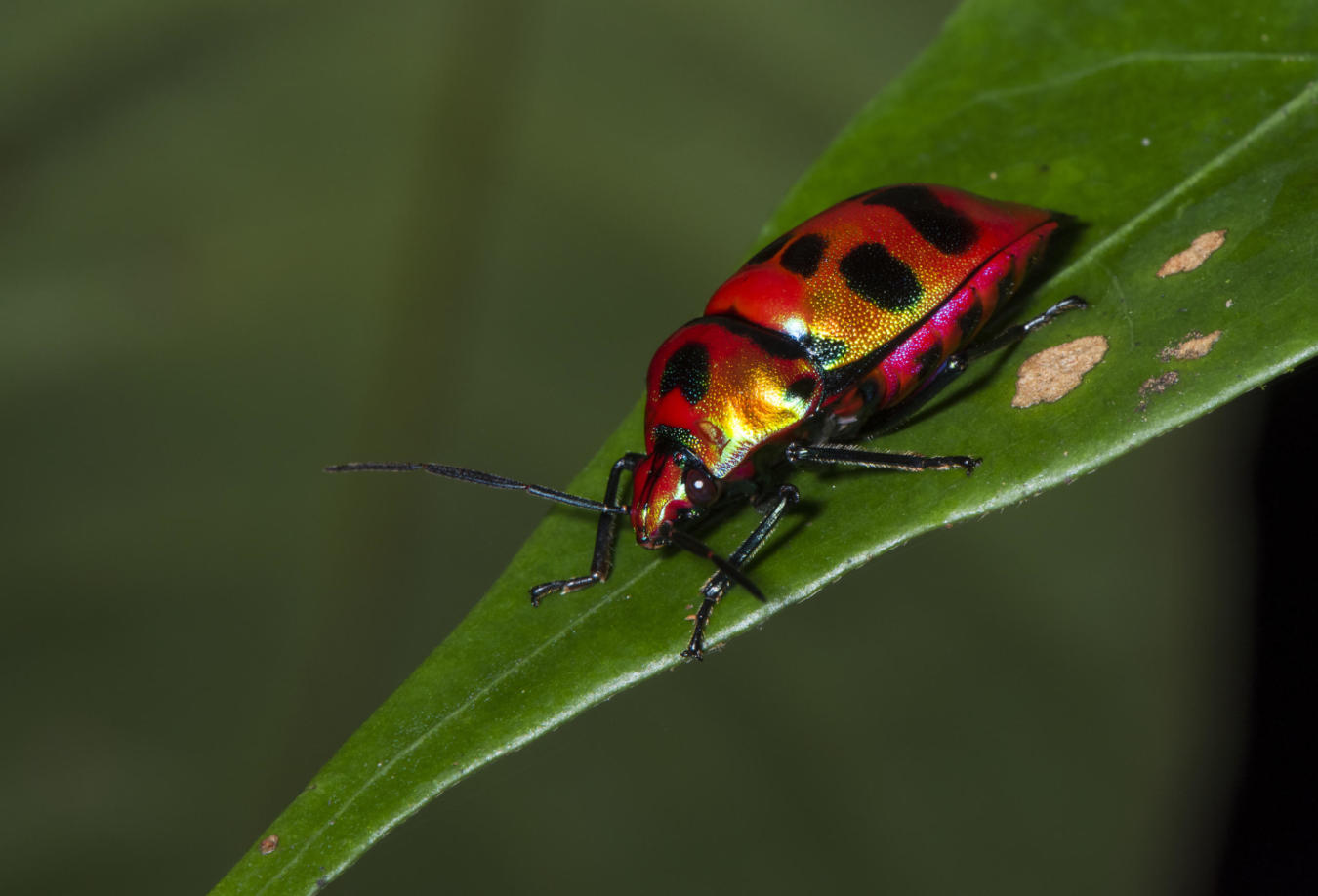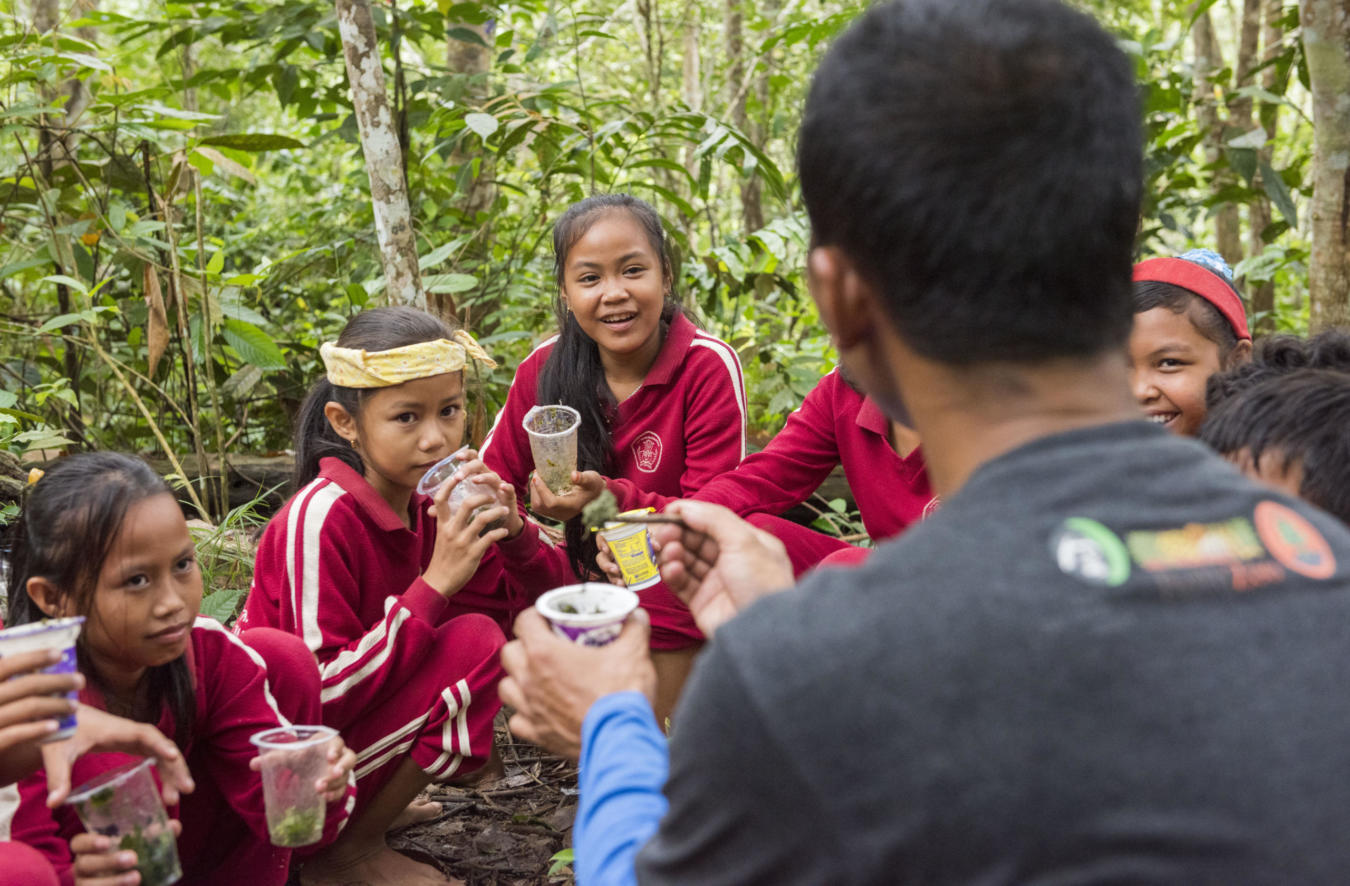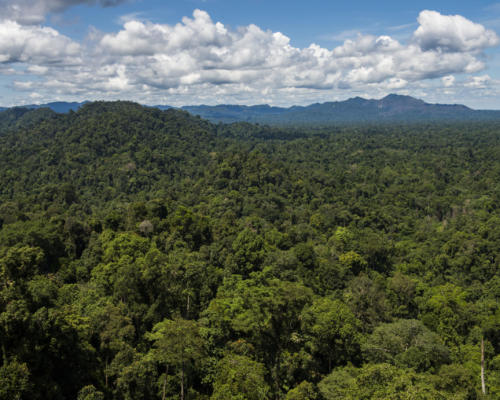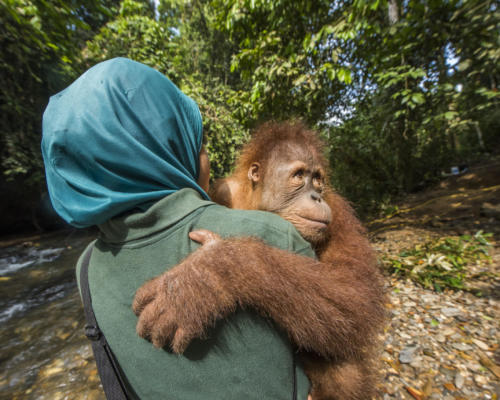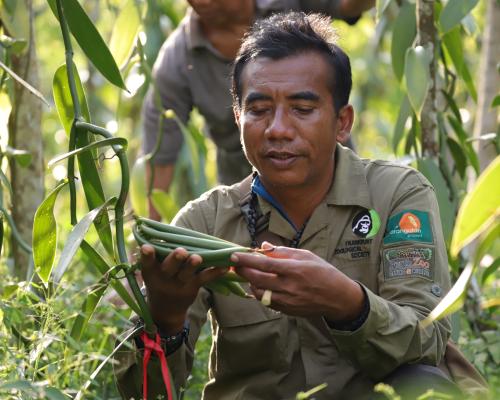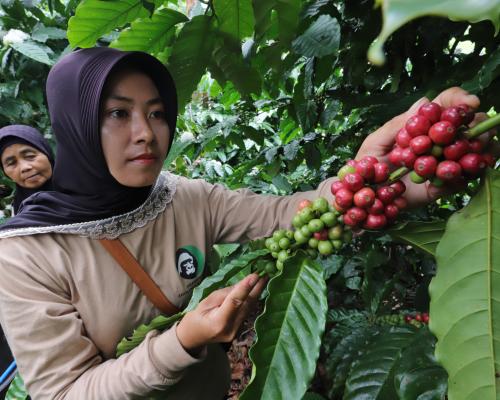Konservasi Ekosistem Hutan Sumatera (KEHUS) becomes managing partner of an area southeast of Bukit Tiga Puluh National Park, where the FZS Orangutan Release Station is located and whose core zone, encompassing 900 hectares, is designated as an Orangutan Sanctuary.
Bukit Tiga Puluh means “30 hills”. It is located in the center of the Indonesian island of Sumatra. This landscape, as well as the whole island, belongs to the global biodiversity hotspot in the Sunda Islands (Sunda Archipelago), where particularly high species richness is found. There are many plant and animal species here that occur nowhere else on earth.
The hilly areas of the Bukit Tiga Puluh landscape are designated as a national park, which is surrounded by particularly valuable lowland rainforest areas. Sumatran elephants prefer this flat terrain, but also threatened species such as orangutans, tigers, which are extinct in many other places, are native to Bukit. The remaining forests are also home to indigenous people who depend on forest products.
- Project name: Bukit Tiga Puluh Landscape Conservation Program
- Size of National Park: 1,450 km²
- Project area size: 3,950 km²
- Program director: Dr. Peter Pratje
- Project start: 2000
- Bukit Tiga Puluh
- Our work in Bukit Tiga Puluh
- Partners
- Milestones
- back to top
The focus of our work is the protection of the Bukit Tiga Puluh lowland rainforests. They are a prerequisite for the survival of Sumatran orangutans, Sumatran elephants, and Sumatran tigers, whose populations have been drastically reduced in recent decades by wildlife hunting and habitat destruction.
With our national partner organization Konservasi Ekosistem Hutan Sumatera (KEHUS, which translates to “Protection of the Sumatran Forest Ecosystem”) and Indonesian authorities, we are helping to protect the remaining forest areas from slash-and-burn and deforestation for conversion to oil palm and acacia plantations.
Sumatran orangutans (Pongo abelii) are threatened with extinction. According to estimates, only about 14,600 individuals live in northern Sumatra today. The dramatic population decline in recent decades is primarily due to the destruction of their natural habitat.
In our orangutan reintroduction project, we work with the Swiss conservation organization PanEco and the Indonesian foundation Yayasan Ecosistem Lestari (YEL). Together, the two partners operate a quarantine station in North Sumatra (Medan). At this station, confiscated animals that have been freed from illegal captivity or rescued from cleared areas, are medically checked and looked after. As soon as they are old enough to be trained in the forest, they come to Bukit Tiga Puluh to our Jungle School to prepare them for a life in freedom.
Even after release, we continue to follow the animals for the first few months to make sure their transition is successful. In the process, we collect data on their behavior and learn more about these charismatic apes. Our main aim is to establish a new “wild” viable population in Bukit Tiga Puluh, the place where these animals once roamed.
Our monitoring program focuses on the endangered charismatic large mammals in the Bukit Tiga Puluh landscape which include orangutans, forest elephants, and tigers:
- Each time our scouts release an orangutan from the Jungle School, we return and collect data about its progress and help it, in case it needs assistance, such as medical help. This care greatly improves the animal’s chance of survival in the wild.
- The small number of Sumatran elephants left in Bukit Tiga Puluh are monitored by our wildlife conservation unit. In order to better track the animals, individual elephants have been tagged with transmitters. This is not only about collecting animal data, but also to prevent conflicts with farmers. See also, ‘Preventing and mediating human-wildlife conflicts’.
- About ten percent of the global Sumatran tiger population (Panthera tigris sumatrae) lives in Bukit Tiga Puluh. We know this thanks to evidence provided through the camera trap monitoring program we have been running since 2012. Based on individual stripe patterns, we have so far been able to record 32 adults and five cubs in our tiger database.
The use of camera traps is one of the best ways for the FZS team in Bukit Tiga Puluh to capture elusive wildlife in the dense jungle. Triggered by heat and motion sensors, we receive an average of about 3,000 images and several video recordings per month from our 35 camera stations. We regularly photograph about 35 different medium-sized mammals. According to the Red List of the World Conservation Union, four species are classified as “Critically Endangered” (including the Malayan Pangolin (Manis javanica), four as “Critically Endangered” (for example the Asian Tapir (Tapirus indicus), Otter Civet (Cynogale bennettii), Sumatran Langur (Presbytis melalophos) and 13 as “Endangered” or “Potentially Endangered”.
For an intact ecosystem, the well-being and cooperation with local communities is an indispensable component. A mobile environmental education program that we run reached 33 neighboring communities close to the park between 2009-2015. Subsequently, FZS achieved the inclusion of environmental education topics in school curricula.
Today, working with smallholder farmers is the focus of our community outreach activities. In a forestry school called ‘Green School’ we inform, advise, and train vocational students and smallholders in ecological silviculture. An associated demonstration area provides hands-on training and makes it possible to experience alternative sources of income to deforestation. The project is already making progress and is currently being expanded.
Massive habitat loss is increasingly causing Sumatran elephants (Elephas maximus sumatranus), which are threatened with extinction, to enter fields within nearby villages in search of food. The Nature Conservancy regularly receives data on any human-elephant conflicts that occur, and on the distribution and migration patterns of the animals.
An FZS sponsored team is helping local people keep elephants out of the fields to protect against crop loss. FZS has been operating an early warning system since 2012. A key component of the early warning system is tagging elephants to track their migrations in real-time, this is then used to warn farmers if the animals are close. More than 250 smallholder farmers are connected to this information network. In addition, FZS provides regular training on how to use deterrents and provides financial support for the construction of elephant protection fences.
Human-orangutan conflict incidents occur infrequently and when they do mostly occur at the forest edge or in recently converted areas. Our scouts investigate all reported cases to determine if an intervention is necessary or if compensation for the damage needs to be made. In most of the approximately ten reported cases per year, orangutans are only near fields and do not cause significant damage.
Successful conservation is always the result of great teamwork. We collaborate with local communities, national authorities, and conservation organizations. Our partners make our conservation work possible.
-
 Disney Conservation Fund (USA)
Disney Conservation Fund (USA) -
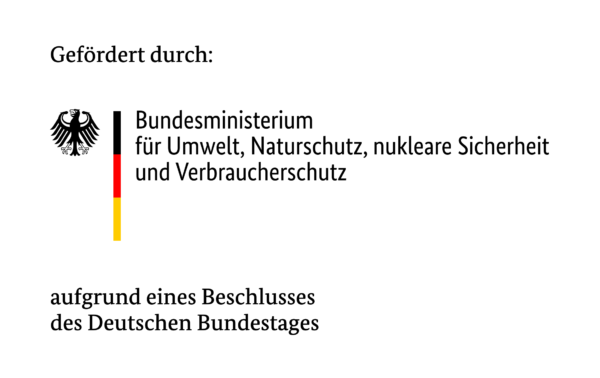 Federal Ministry for the Environment, Nature Conservation, Nuclear Safety and Consumer Protection
Federal Ministry for the Environment, Nature Conservation, Nuclear Safety and Consumer Protection -
 Fondation Segré
Fondation Segré -
 International Elephant Project (Australia)
International Elephant Project (Australia) -
 KfW Group
KfW Group -
 PanEco
PanEco -
 Perth Zoo
Perth Zoo -
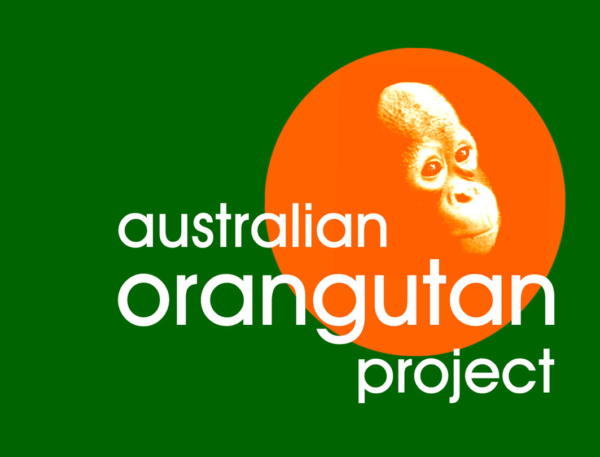 The Orangutan Project (TOP)
The Orangutan Project (TOP) -
 Tierpark Hellabrunn München
Tierpark Hellabrunn München -
 U.S. Fish & Wildlife Service
U.S. Fish & Wildlife Service -
 WWF Deutschland
WWF Deutschland -
 WWF U.S.
WWF U.S. -
 Yayasan Ecosistem Lestari
Yayasan Ecosistem Lestari -
 Yayasan Konservasi Ekosistem Hutan Sumatera
Yayasan Konservasi Ekosistem Hutan Sumatera -
 Dresden Zoo
Dresden Zoo -
 Kementerian Lingkungan Hidup dan Kehutanan
Kementerian Lingkungan Hidup dan Kehutanan -
 Zoo Frankfurt
Zoo Frankfurt

10th wild baby orangutan, Senja is born in Bukit Tiga Puluh National Park
NGO PT Alam Bukit Tigapuluh receives a management license lasting 60 years with the condition to preserve the Bukit Tiga Puluh ecosystem in the long term. We actively support this project.
In 2014, we supported the establishment of the Indonesian foundation Yayasan Konservasi Ekosistem Hutan Sumatera (KEHUS).
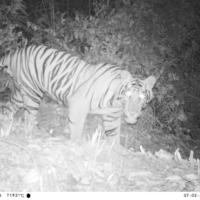
Our monitoring program for Sumatran tigers begins. Camera traps are used to systematically record the population. Also, our 150th Jungle School orangutan is released into the wild.
The 150th orangutan is released into Bukit Tiga Puluh National Park.
Launch of the endangered Sumatran elephant (Elephas maximus sumatranus) protection program
The Jungle School Open Orangutan Sanctuary (OOS) is established.
FZS teams start regularly visiting local communities to offer environmental education courses.
We expand our conservation activities. Our work focus now includes landscape protection for Bukit Tiga Puluh.

First recorded birth of a wild baby orangutan in the Bukit Tiga Puluh wilderness.
Ranger scouts begin patrolling Bukit Tiga Puluh regularly to protect orangutans and other wildlife from poaching activities.
The first orangutan leaves our reintroduction station to live in the Bukit Tiga Puluh wilderness.

The first FZS station for the release of orangutans into the wild starts operation.
Bukit Tiga Puluh is identified as a suitable site for reintroducing orangutans.






